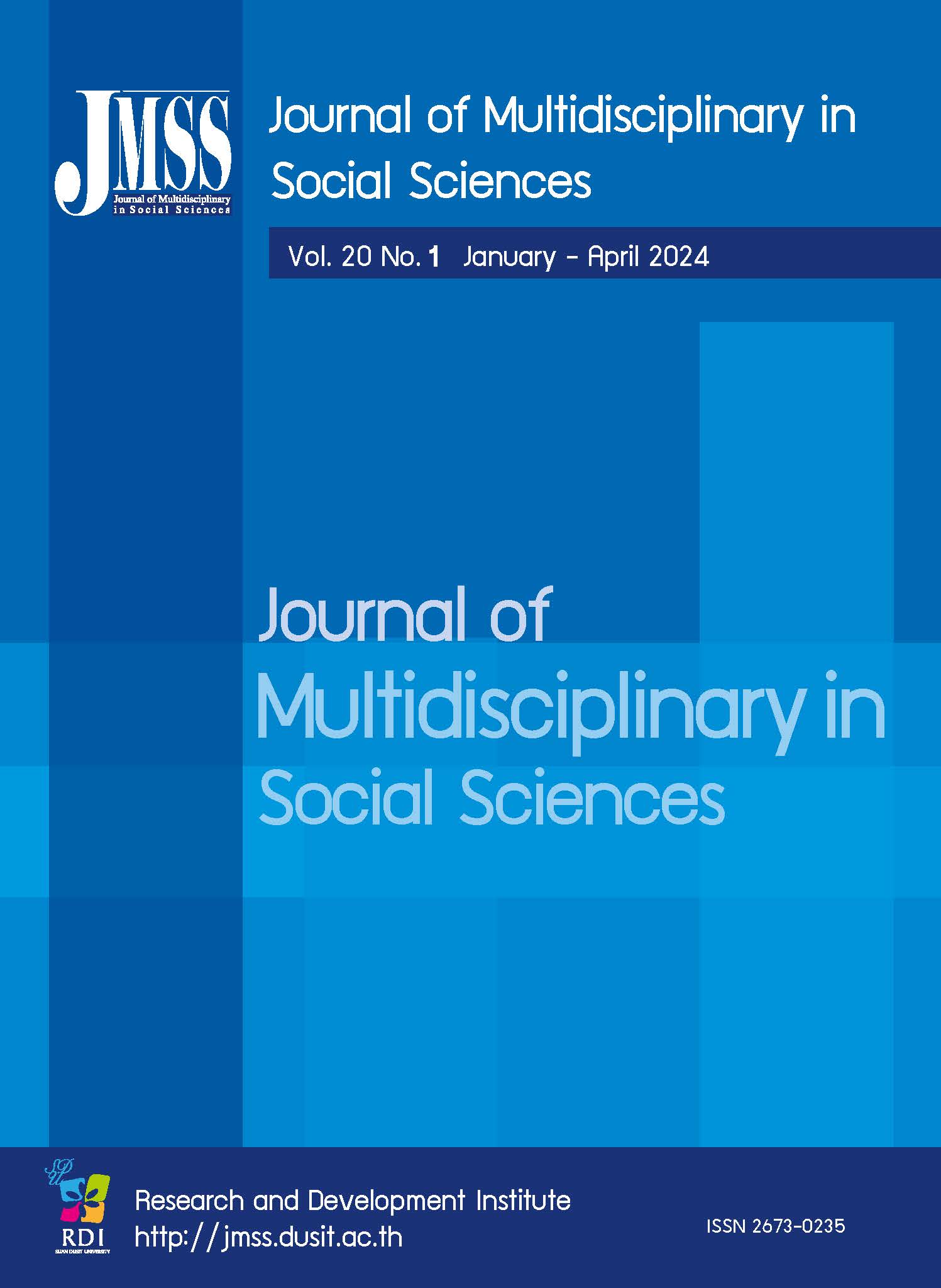The Charm of Phetchaburi’s Local Foods: The Added Value of Phetchaburi Local Foods based on Storytelling Innovation for Enhancement of Creative Cultural Tourism
Keywords:
Charming of Phetchaburi local foods, Local food, Storytelling innovation, Creative tourismAbstract
This research was conducted to 1) investigate the local wisdom and creative cultural capital of Phetchaburi local foods 2) develop added value for local foods through the use of storytelling innovation 3) develop the innovation of storytelling and its application and 4) test and evaluate the tourist activities, routes and exhibition of local foods for promoting the creative cultural tourism of Phetchaburi Province. The research process was divided into 4 stages as follows: The first stage was to investigate the local cultural capital and wisdom. The first informant group consisted of local entrepreneurs, community leaders and folk philosophers and accounted for 44 persons and the second group was 400 Thai tourists. The research instruments were in- depth interviewing, structural questionnaire and document analysis. The second stage was to develop and increase the added value of local foods. The target group was 20 entrepreneurs of local foods. The research instruments were structural questionnaire and in-depth interviewing. The third stage was to develop the innovation of storytelling, create an E-Book and other media applications. The participants were 5 experts and 400 tourists. The instruments were evaluation of the quality of applications and tourist satisfaction. The fourth stage was to test and evaluate the tourist activities, routes and exhibition of local foods of Phetchaburi Province. The participants were 15 tourists. The instruments were evaluation of the tourist satisfaction. The collected data was analyzed with the computer program of social science. The analyzed data was presented into percentage, mean, standard deviation and content analysis.
References
Department of Community Development, Ministry of Interior. (2018). Manual for Mobilizing OTOP Community Tourism and Innovation Project. Bangkok: Ministry of Interior.
Sungrugsa N., Junharik W., Thammaapipon S., Leksuma P., Udomsilp M., Areeop A., Wiriya K., &Phetaue P. (2021). Community products based on identity of cultural capital for the being of gifts and souvenirs related to tourism. International Journal of Entrepreneurship, 25(4), 1-10.
Korstanje, M. (2014). The Routledge Handbook of cultural tourism. Annals of Tourism Research, 47.
Liu, C. R., Wang, Y. C., Huang, W. S., & Chen, S. P. (2017). Destination fascination: conceptualization and scale development. Tourism Management, 63, 255-267.
Na Thalang, A. (2003). Local Wisdom and Knowledge Management. Bangkok: Amarin Printing and
Publishing Co., Ltd. Robertson, H.M., Smith, M., & MacLeod, N. (2012). Key Concepts in Tourist Studies. London: SAGE Publications Ltd.
Sreephawathakul, A. (2010). Consumer Behaviors of Seabite Leaf of Dwellers Living in Bangkhunsai Subdistrict Ban Laem District Phetchaburi Province. Phetchaburi: Phetchaburi Rajabhat University.
Sungrugsa, N. (2019). The Cultural and Wisdom Based-Product Development Project to Have Its Out-Standing Identity in Central and Southern Part of Thailand. Bangkok: Department of Industrial Promotion, Ministry of Industry.
Sungrugsa N., Junharik W., Thammaapipon S., Leksuma P., Udomsilp M., Areeop A.,Wiriya K. &Phetaue P., (2021). Community Products based on Identity of Cultural Capital for the Being of Gifts and Souvenirs related to tourism. International Journal of Entrepreneurship, 25(4), 1-10.
Samgoset, W. (2019). The Told Story “How to Help Tourism”. Retrieved September 10, 2023, from https://www.bangkokbiznews.com/blog/detail/648766
Tourism Council of Phetchaburi. (2021). Phetchaburi, Creative City of Local Foods Endorsed by UNESCO. Phetchaburi: Tourism Council of Phetchaburi.
Todilokwedcha, A. (2018). Dynamic Solutions of Solving Poverty. Retrieved September 10, 2023, from
https://plan.cdd.go.th/wpcontent/uploads/sites/97/2018/08/%E0%B9%81%E0%B8%AD%E0%B9%
%E0%B8%87%E0%B9%80%E0%B8%A5%E0%B9%87%E0%B 118.8%81%E0%B9%80%E0%B8%
A%E0%B9%87%E0%B8%84%E0%B8%AD%E0%B8%B4%E0%B8%99.pdf.
Woraseeha A. Phimomratanakan S. Nampinyou A. & Phuthong B.(2018). Building up and Upgrading of Creative Tourist Routs through Local Foods in Western Region of Thailand. Bangkok: National Research Council of Thailand and The Thailand Research Fund.
Yamane, Taro. (1967). Statistics, An Introductory Analysis, 2nd Ed., NY : Harper and Row.
Yananan D., opanurakkunU., Boonkoum W., Phenwansuk A.,Boonkoum P., Sungrugsa N., Areerob A., Chaiyasi W. & Janu S. (2021). The Development of Storytelling Books, Storytellers andInterpreters, Mass Communicating Medias, Digital Online Applications, Tourist Activities,
Tourism Routes, and Tourism Service Quality to Support and Stimulate Tourisms in the Royal Coast.Bangkok: Program Management Unit Competitiveness (PMUC).

Downloads
Published
How to Cite
Issue
Section
License

This work is licensed under a Creative Commons Attribution-NonCommercial-NoDerivatives 4.0 International License.







